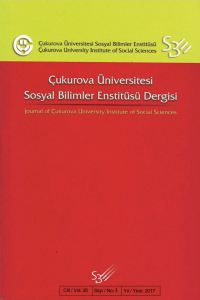Abstract
This
article analyzes corporate tax returns from tax evasion based on corporate
taxpayers’ payment types. A tax payment function is generated for tax evasion
and four payment types of the tax evader are included. An application is
provided to compare tax returns under new draft tax procedural law and existing
law. The results demonstrate that: (1) after implementation of new draft law,
17% more tax return can be generated compared to honest tax return from
settlement; (2) tax administration needs to
raise audit rates to a mean of 41% to force corporate taxpayer to point of
indifference; (3) the agent of the corporation will prefer payment types of
remorse exemption, settlement, after statutory period and reduction in order;
(4) the government should implement new policies to prevent corporate taxpayer
from paying two times the amount of fine per tax item.
References
- Akbey, F. (2014). An inquisition on tax audits and revenues in Turkey. Dokuz Eylul University Journal of Economic and Administrative Sciences; 29(1): 63-103 Allingham, M.G. & Sandmo, A. (1972). Income tax evasion: A theoretical analysis, Journal of Public Economics; 1: 323-338 Alm, J., McClelland, G.H. & Schulze, W.D. (1992). Why do people pay taxes? Journal of Public Economics; 48(1): 21-38 Altundis, M. (2007). Tax crimes and penalties imposed in TPL and the effects of new Turkish criminal law on these crimes. Journal of Ankara Bar Association; 65(1):168-179 Fukofuka, P. (2013). The contextual framework of corporate income tax evasion. Journal of Accounting and Taxation; 5(2): 27-37 Hindriks, J. & Myles, G.D. (2006). Intermediate Public Economics, (2nd Ed.), The MIT Press, Massachusetts. Schneider, F., Raczkowski, K. & Mröz, B. (2015). Shadow economy and tax evasion in the EU. Journal of Money Laundering Control; 18(1): 34-51 Slemrod, J. & Yitzhaki, S. (2002). Tax avoidance, evasion and administration. Handbook of Public Economics, Volume 3, North Holland, Amsterdam Dhami, S. and al-Nowaihi, A. (2006). Why do people pay taxes? Prospect theory versus expected utility theory. https://www2.le.ac.uk, Access date: 18.08.2017 Istanbul Chamber of Certified Public Accountants (2016). The Draft TPL Evaluation Commission Report. http://archive.ismmmo.org.tr/Mansetler/MEVZUAT/Duyuru/VUK_TasariTaslakKomisyonRapor.pdf_431.pdf, Access date: 21.08.2016 Lipatov, V. (2005). Corporate tax evasion: The case for specialists. Munich Personal RePEc Archive, Paper No. 33998, https://mpra.ub.uni-muenchen.de/33998/, Access date: 19 August 2016 Tax Audit Committee (2016). 2012-2015 Activity Reports. http://www.vdk.gov.tr/default.aspx?nsw=dciSsil8zCRLPP9XnV0K5Q==-H7deC+LxBI8=&nm=1048, Access date: 10 August 2016 Tax Net (2016). Tax fraud crimes and penalties. http://www.verginet.net/dtt/2/359Kacakciliksuclarivecezalari_3197.aspx, Access date: 28 August 2016 Tax Inspectors Foundation (2016). An example for a limited company audited. http://www.vmv.org.tr/Yay%C4%B1n/10, Access date: 28.05.2016 Turkish Revenue Administration (2016a). The number of active corporate taxpayers. http://www.gib.gov.tr/fileadmin/user_upload/VI/20151.htm, Access date: 01 August 2016 Turkish Revenue Administration (2016b). Central government budget revenues. http://www.gib.gov.tr/fileadmin/user_upload/VI/GBG/Tablo_22.xls.htm, Access date: 08.08.2016 Turkish Revenue Administration (2007). Settlement in resolving tax disputes with the tax administration. www.gib.gov.tr/fileadmin/user_upload/yayinlar/uzlasma.pdf, Access date: 28.06.2016 Turkish Revenue Administration (2016c). Strategy Development Department 2011-2015 Activity Reports. http://www.gib.gov.tr/kurumsal/stratejik-yonetim/faaliyet-raporlari, Access date: 10.05.2016 Turkish Revenue Administration (2016d). Special irregularity fine. http://www.gib.gov.tr/node/83111, Access date: 28.08.2016 Yavaslar, F.B. (2015). Surcharges and penalties in tax law. Turkey’s national report. www.eatlp.org/uploads/public/2015/National%20report%20Turkey.pdf, Access date: 04.05.2016
Abstract
References
- Akbey, F. (2014). An inquisition on tax audits and revenues in Turkey. Dokuz Eylul University Journal of Economic and Administrative Sciences; 29(1): 63-103 Allingham, M.G. & Sandmo, A. (1972). Income tax evasion: A theoretical analysis, Journal of Public Economics; 1: 323-338 Alm, J., McClelland, G.H. & Schulze, W.D. (1992). Why do people pay taxes? Journal of Public Economics; 48(1): 21-38 Altundis, M. (2007). Tax crimes and penalties imposed in TPL and the effects of new Turkish criminal law on these crimes. Journal of Ankara Bar Association; 65(1):168-179 Fukofuka, P. (2013). The contextual framework of corporate income tax evasion. Journal of Accounting and Taxation; 5(2): 27-37 Hindriks, J. & Myles, G.D. (2006). Intermediate Public Economics, (2nd Ed.), The MIT Press, Massachusetts. Schneider, F., Raczkowski, K. & Mröz, B. (2015). Shadow economy and tax evasion in the EU. Journal of Money Laundering Control; 18(1): 34-51 Slemrod, J. & Yitzhaki, S. (2002). Tax avoidance, evasion and administration. Handbook of Public Economics, Volume 3, North Holland, Amsterdam Dhami, S. and al-Nowaihi, A. (2006). Why do people pay taxes? Prospect theory versus expected utility theory. https://www2.le.ac.uk, Access date: 18.08.2017 Istanbul Chamber of Certified Public Accountants (2016). The Draft TPL Evaluation Commission Report. http://archive.ismmmo.org.tr/Mansetler/MEVZUAT/Duyuru/VUK_TasariTaslakKomisyonRapor.pdf_431.pdf, Access date: 21.08.2016 Lipatov, V. (2005). Corporate tax evasion: The case for specialists. Munich Personal RePEc Archive, Paper No. 33998, https://mpra.ub.uni-muenchen.de/33998/, Access date: 19 August 2016 Tax Audit Committee (2016). 2012-2015 Activity Reports. http://www.vdk.gov.tr/default.aspx?nsw=dciSsil8zCRLPP9XnV0K5Q==-H7deC+LxBI8=&nm=1048, Access date: 10 August 2016 Tax Net (2016). Tax fraud crimes and penalties. http://www.verginet.net/dtt/2/359Kacakciliksuclarivecezalari_3197.aspx, Access date: 28 August 2016 Tax Inspectors Foundation (2016). An example for a limited company audited. http://www.vmv.org.tr/Yay%C4%B1n/10, Access date: 28.05.2016 Turkish Revenue Administration (2016a). The number of active corporate taxpayers. http://www.gib.gov.tr/fileadmin/user_upload/VI/20151.htm, Access date: 01 August 2016 Turkish Revenue Administration (2016b). Central government budget revenues. http://www.gib.gov.tr/fileadmin/user_upload/VI/GBG/Tablo_22.xls.htm, Access date: 08.08.2016 Turkish Revenue Administration (2007). Settlement in resolving tax disputes with the tax administration. www.gib.gov.tr/fileadmin/user_upload/yayinlar/uzlasma.pdf, Access date: 28.06.2016 Turkish Revenue Administration (2016c). Strategy Development Department 2011-2015 Activity Reports. http://www.gib.gov.tr/kurumsal/stratejik-yonetim/faaliyet-raporlari, Access date: 10.05.2016 Turkish Revenue Administration (2016d). Special irregularity fine. http://www.gib.gov.tr/node/83111, Access date: 28.08.2016 Yavaslar, F.B. (2015). Surcharges and penalties in tax law. Turkey’s national report. www.eatlp.org/uploads/public/2015/National%20report%20Turkey.pdf, Access date: 04.05.2016
Details
| Journal Section | Makaleler |
|---|---|
| Authors | |
| Publication Date | October 21, 2017 |
| Submission Date | November 29, 2017 |
| Published in Issue | Year 2017 Volume: 26 Issue: 3 |


